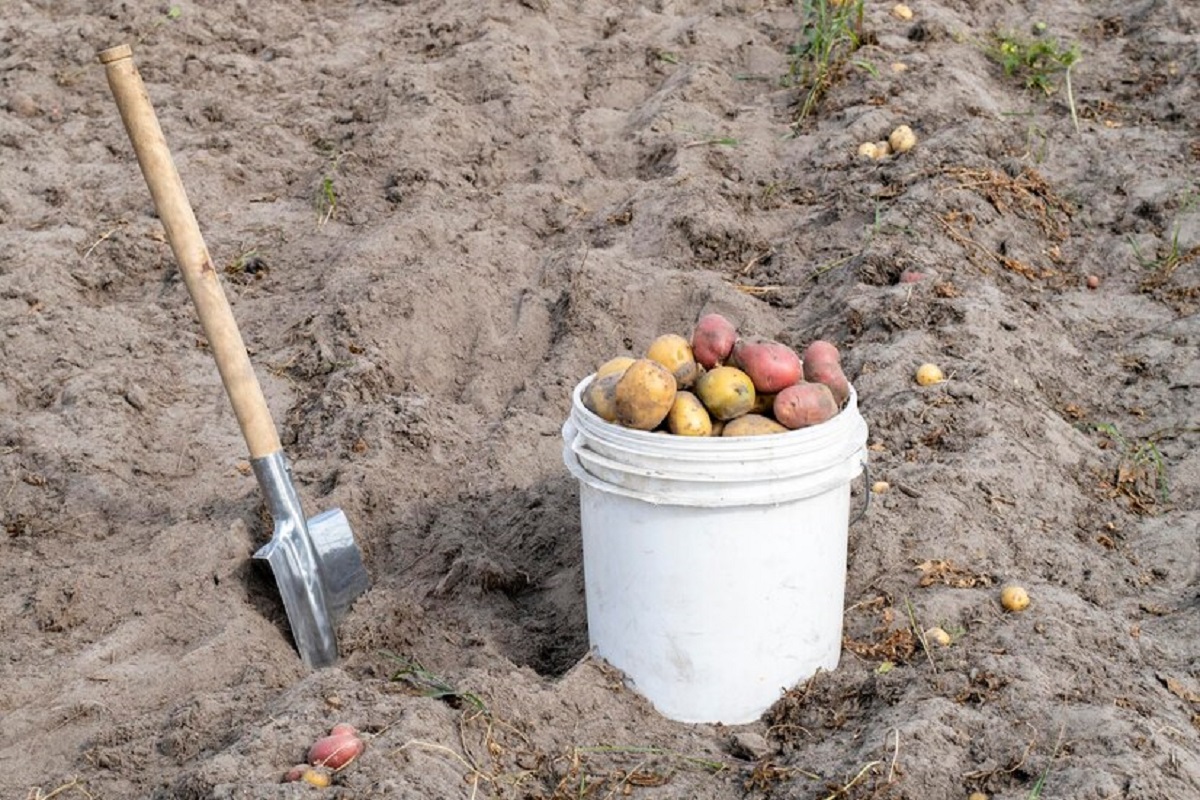Have you ever wondered how many potatoes you can grow in a bucket? It might seem like a straightforward question, but the answer involves some fascinating insights into the world of gardening and potato cultivation. In this article, we’re going to explore the process of growing potatoes in a bucket, step by step, and uncover the factors that determine the yield of your potato harvest. The article is authored by Pudingarden.com.
The Appeal of Bucket Potato Gardening
Bucket gardening has gained popularity among both seasoned gardeners and beginners alike. It’s a convenient and space-saving way to grow potatoes, especially if you have limited garden space or no garden at all. The process is relatively simple, and it allows you to enjoy the satisfaction of growing your own potatoes even in small living spaces. If you’re interested in learning more about efficient watering techniques, you can also explore how to use the Gardena Sprinkler to keep your bucket garden well-hydrated.
Choosing the Right Bucket
Grow potatoes in a bucket can be an exciting venture, but selecting the right bucket is crucial for success. A 5-gallon bucket, with its sufficient size and depth, is a popular choice among growers. The bucket’s depth is particularly crucial for the potato plants to establish a strong root system, leading to a bountiful harvest.
Preparing the Potatoes
Before you start planting, it’s important to choose the right type of potatoes. You can use seed potatoes, which are specifically grown for planting, or you can cut larger potatoes into chunks, each containing at least one “eye.” These eyes are where the sprouts will emerge.
Planting Process
- Layer of Soil: Begin by adding a few inches of well-draining potting soil at the bottom of the bucket.
- Planting Potatoes: Place the seed potatoes or potato chunks on the soil, with the eyes facing upward.
- Cover and Water: Cover the potatoes with another layer of soil and water thoroughly. Make sure the soil is consistently moist but not waterlogged.
- Growth and Hilling: As the potato plants grow and the stems reach about 6 inches in height, add more soil to cover the stems, leaving just a few leaves exposed. Repeat this process, known as hilling, as the plants continue to grow.
Factors Influencing Yield
Several factors determine how many potatoes you’ll harvest from your bucket:
- Spacing: The number of potatoes per bucket depends on how closely you plant them. Proper spacing allows each potato plant to access sufficient nutrients and light.
- Variety: Different potato varieties yield different amounts. Some are naturally more prolific than others.
- Soil Quality: Rich, well-draining soil with adequate nutrients will promote healthy growth and a higher yield.
- Light and Water: Providing adequate sunlight and consistent watering is crucial for a successful harvest.
Harvesting Your Potatoes
After a few months of nurturing your potato plants, it’s time to reap the rewards. Gently dig into the soil to unearth your homegrown potatoes. The excitement of uncovering these hidden treasures is both satisfying and thrilling.
Conclusion
Growing potatoes in a bucket is a rewarding endeavor that allows you to enjoy the taste of freshly harvested potatoes even in limited spaces. With the right preparation, care, and attention to detail, you can cultivate a bountiful harvest of this versatile and delicious vegetable.
FAQs
Can I use any type of bucket for growing potatoes?
While you can experiment with different containers, a 5-gallon bucket is generally recommended due to its size and depth.
Do I need to buy special seed potatoes?
No, you can use larger potatoes from the grocery store as long as they have “eyes” for sprouting.
How often should I water my bucket potatoes?
Keep the soil consistently moist, but avoid overwatering that can lead to waterlogged roots.
When is the best time to harvest potatoes?
Potatoes are usually ready to harvest when the plants have flowered and the leaves start to turn yellow.
Can I reuse the soil after harvesting?
Yes, you can enrich the soil with compost and reuse it for future gardening projects.

